I’ve mentioned this before on the blog and have joked about it several times on twitter but going forward, I’m paying attention, close attention.
To what, you may ask…?
To what my wife is buying and using! As she buys, I will buy, but my purchases will be shares.
Take a look at the following examples since we have been married (we married in 2004):
- Apple $AAPL (iPhone, iMac, iPad, iTunes, apps, etc.)
- Starbucks $SBUX (Caramel macchiato)
- Google $GOOG (Search: computer & phone)
- Amazon $AMZN (Prime, enough said!)
- Facebook $FB (Every day)
- Costco Wholesale $COST (Member since before we were married)
- Target $TGT (The go-to store)
- Coach $COH (Several hand bags; even my own business bag)
- Michael Kors $KORS (Watches & accessories)
- CVS Caremark $CVS (The go-to pharmacy)
- Netflix $NFLX (Movies and streaming online series)
- Walt Disney Co $DIS (Mickey Mouse, need I say more)
- Johnson & Johnson $JNJ (Kids!)
- Procter & Gamble $PG (Household)
- Visa $V (Credit & debit)
- MasterCard $MA (Credit)
- Pepsico $PEP (Gatorade, Pepsi, etc.)
- TJX Companies $TJX (TJ Max, Marshalls, Home Goods, etc.)
- Home Depot $HD (Projects and equipment)
- Verizon $VZ (Phone and FiOS)
- Exxon Mobil $XOM (Gas)
- Wells Fargo $WF (Banking)
My wife religiously buys or uses products from the companies above on a daily and weekly basis. A simple buy and hold plan, including all of the names above, would have outperformed my gains over the past 10 years. It’s easy in hindsight to make this analysis but I am telling you – I will be watching closely as to what new companies make it on her radar.
In addition to my wife, I will also be closely watching the names of the companies that my kids get involved with (young at this point but the future is theirs). It’s not a ground-breaking game-plan but appears to be more lucrative than my plan of searching for the next growth industry or 10-bagger. Without her knowing it, my wife’s mutual fund would be comprised of a strategy employed by the great Peter Lynch.
According to sources, Peter Lynch managed the Fidelity Magellan Fund from 1977 to 1990, during which time the fund’s assets grew from $20 million to $14 billion. Even more impressive, Lynch reportedly beat the S&P 500 Index benchmark in 11 of those 13 years, achieving an annual average return of 29%.
Peter Lynch subscribed to the idea of “know what you own”. I know what my wife owns and can take the lesson that many other wives (and people in general) are buying what she is buying. Consumers = profits and profits typically lead to earnings which leads to a rise in share prices. Sounds like a simple formula.
Don’t get me wrong, I haven’t completely ignored the stocks above as I have owed a few of the names but I haven’t owned them long enough or with enough quantity. Rather than “owning” them, I have been trading them (in short term periods).
In addition to the solid companies above, I am still more attracted to finding the next great growth stock within a great industry. I like to search for cutting edge technology or innovative companies that will lead a new revolution. I research and buy names such as $DDD (3D Systems), $INVN (Invensense), $TWTR (Twitter), $SLCA (US Silica), $TSLA (Tesla) – all of which aren’t on my wife’s “buy list”. She’s aware of Twitter and maybe Tesla but doesn’t use their products or services. Other than me yapping about what I am researching, she would not know the difference between $DDD and $SPLK. Perhaps that’s a message to me…?
Chipotle Mexican Grill, now that she knows, understands and occasionally eats from their establishments.
I am sure a few of the companies she uses haven’t performed all that great but the vast majority have been excellent.
So, forget my mutual fund and forget the pros and their fees. I should create my wife’s mutual fund and ride those profits into the retirement sunset!
10-Year Charts of My Wife’s Mutual Fund:
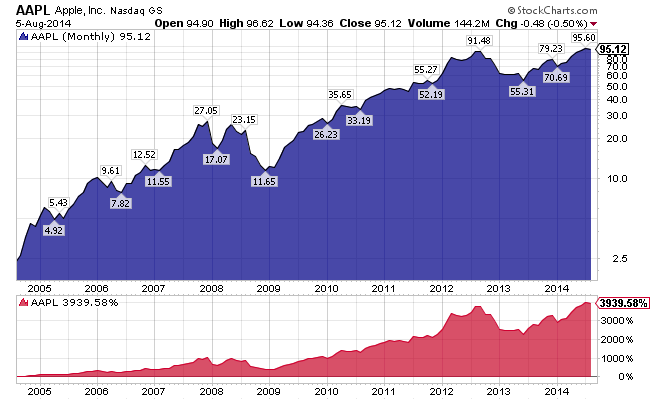
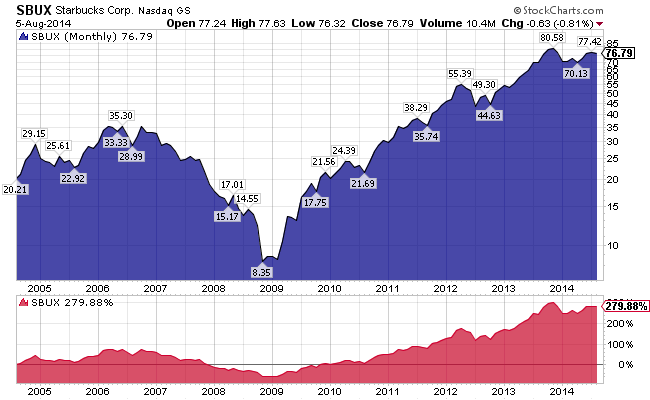

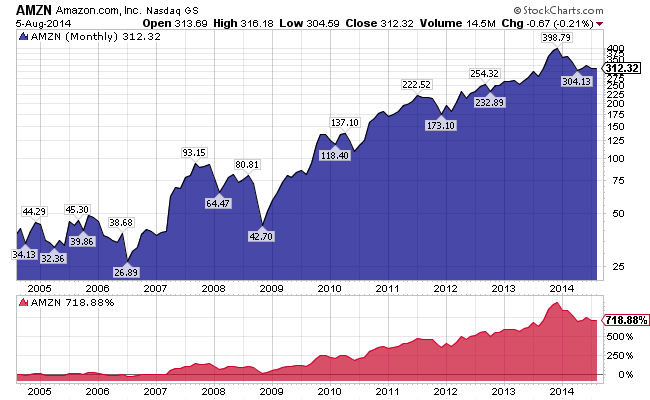
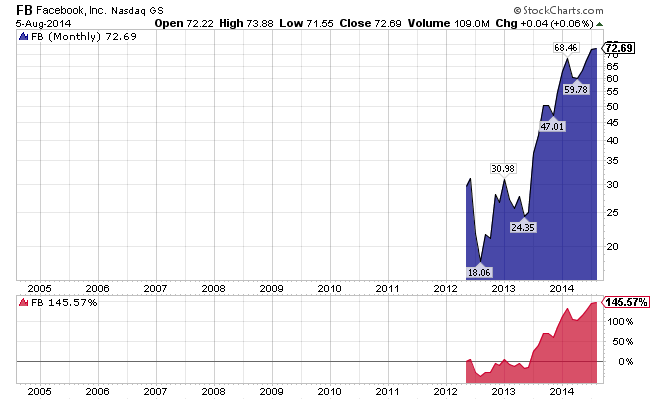
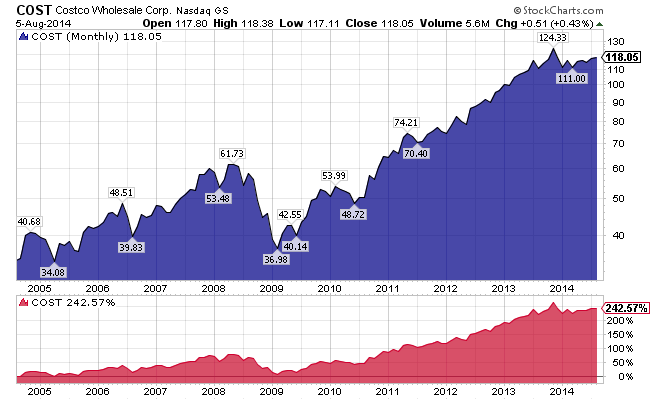
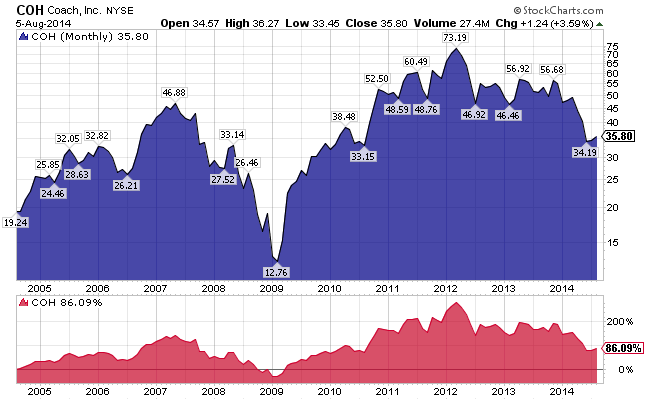
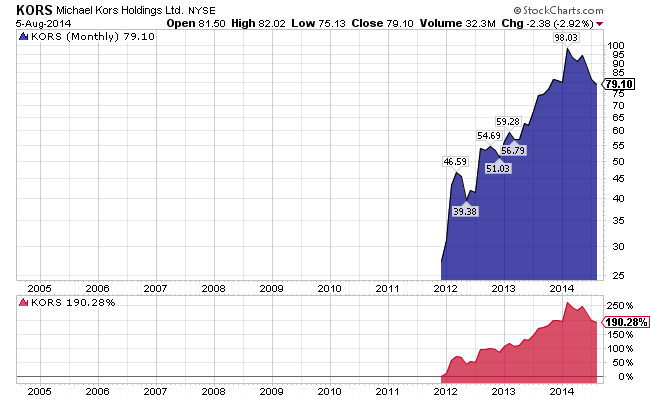
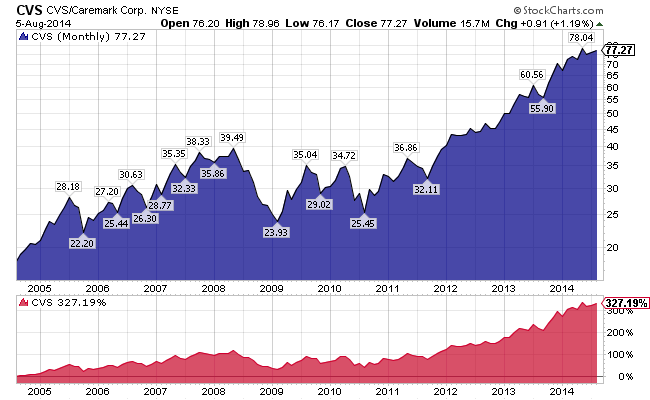
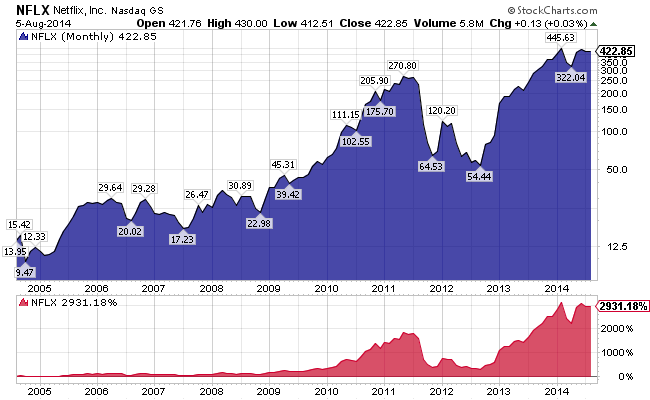
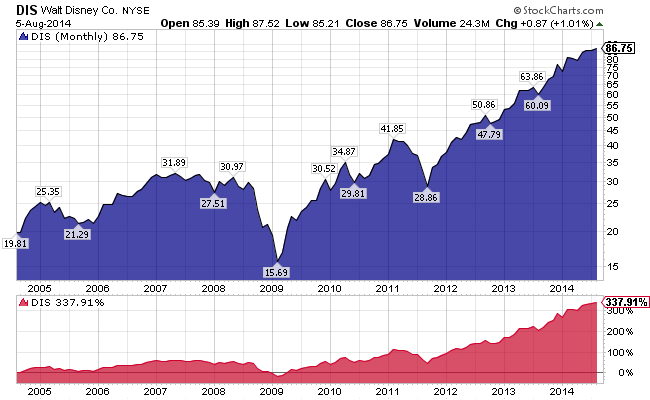
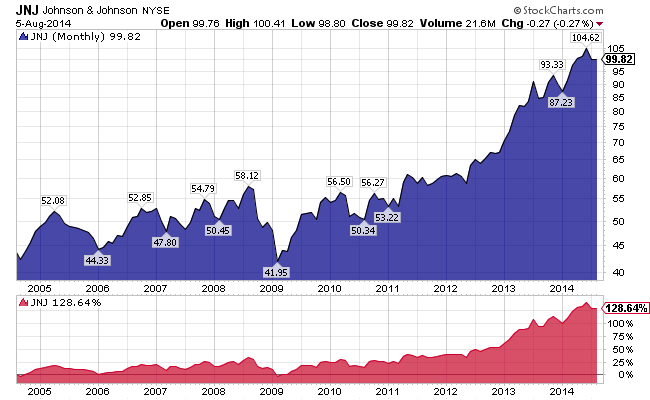
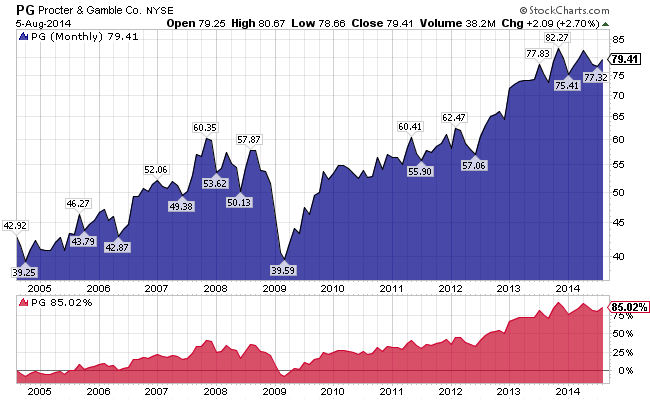
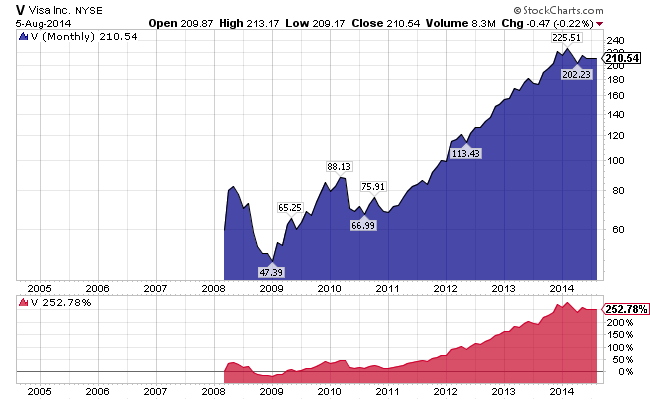

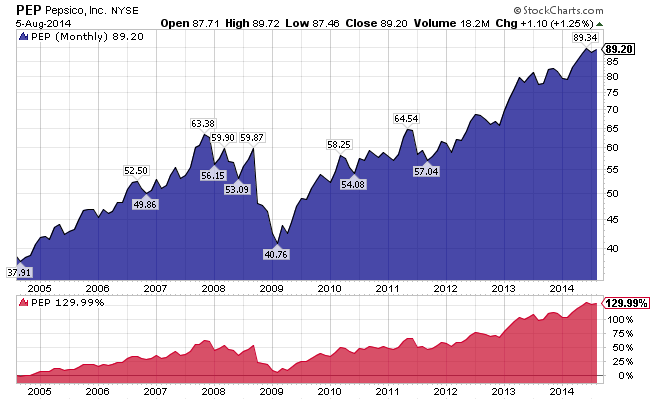
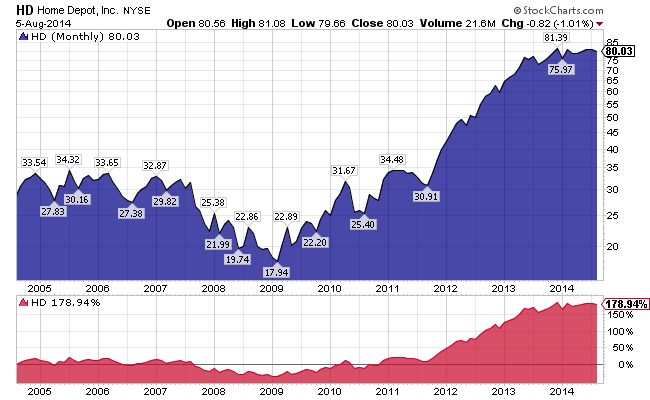
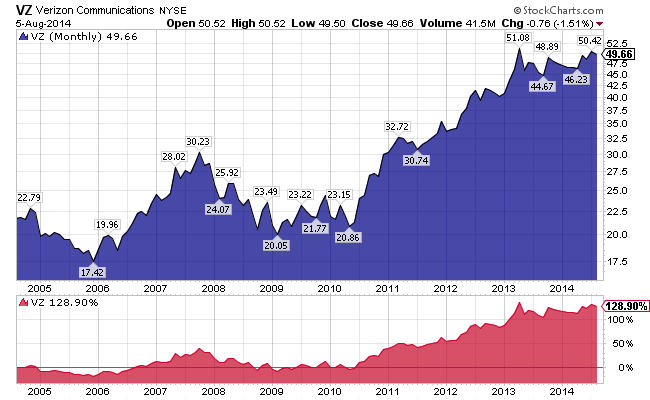

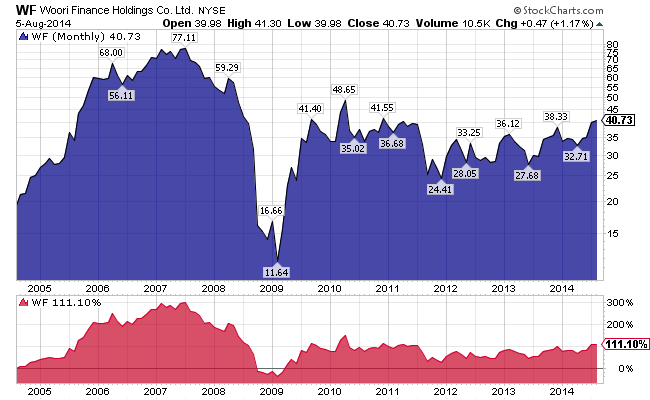
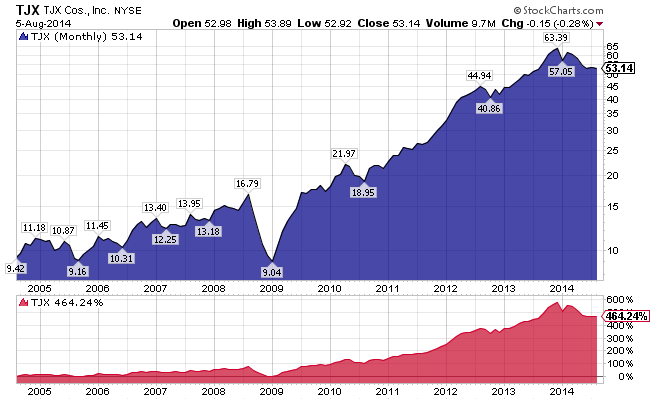
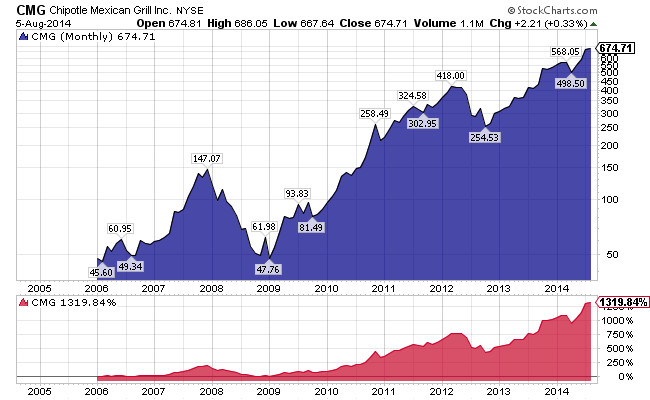





You are following the Peter Lynch method for picking stocks from his wife/daughters shopping habits.
See chapter 8 from his book “Beating the Street”
Just goes to show you that buying the companies whose products you use and then holding forever is hard to beat.